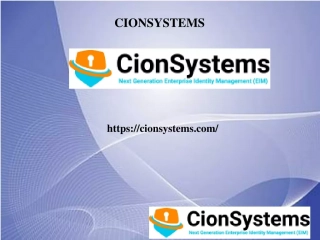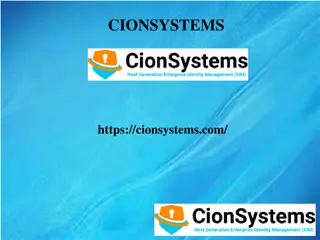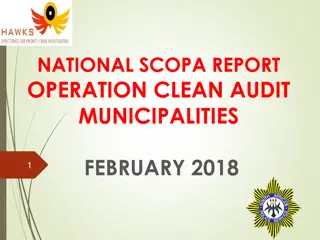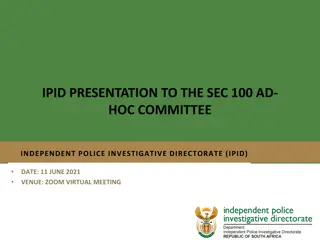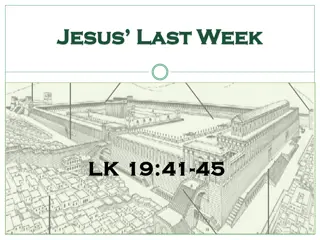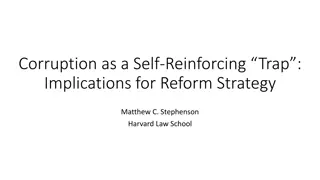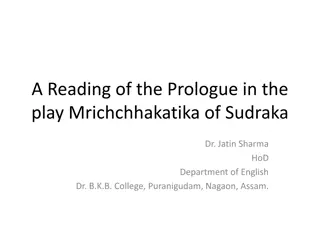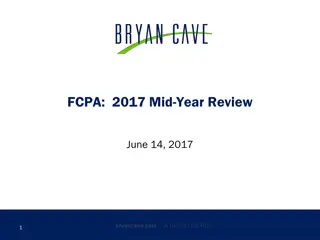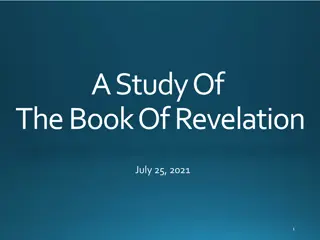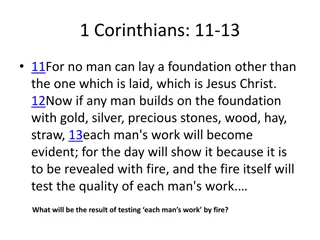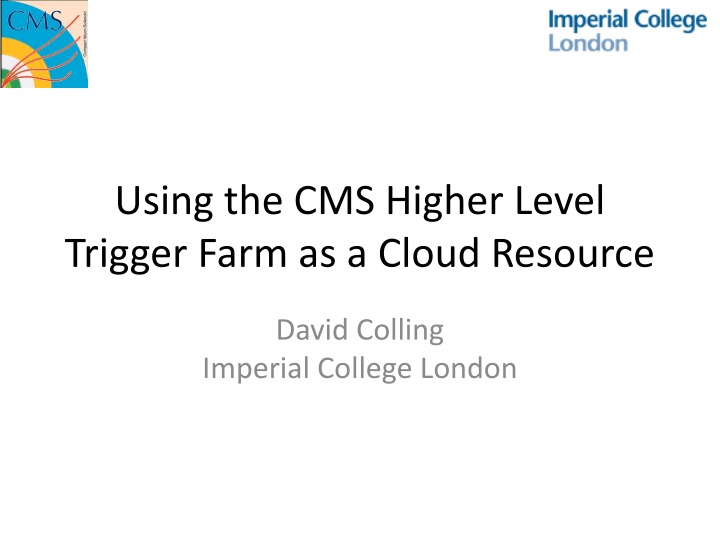
Unlocking the Potential of CMS Higher Level Trigger Farm in Cloud Computing
Learn about using the CMS Higher Level Trigger (HLT) Farm as a cloud resource, its technical details, benefits of utilizing it in cloud computing, and its role in data processing at CMS. Discover why virtualization and quick migration are crucial for efficient use of HLT as a cloud resource in the field of high-energy physics.
Download Presentation

Please find below an Image/Link to download the presentation.
The content on the website is provided AS IS for your information and personal use only. It may not be sold, licensed, or shared on other websites without obtaining consent from the author. If you encounter any issues during the download, it is possible that the publisher has removed the file from their server.
You are allowed to download the files provided on this website for personal or commercial use, subject to the condition that they are used lawfully. All files are the property of their respective owners.
The content on the website is provided AS IS for your information and personal use only. It may not be sold, licensed, or shared on other websites without obtaining consent from the author.
E N D
Presentation Transcript
Using the CMS Higher Level Trigger Farm as a Cloud Resource David Colling Imperial College London
Caveats This is still very much work in progress ... This is the work of several people from within CMS and in some places I have reused parts of their material would like to thank them Any opinions expressed (and errors made) are my own David Colling for CMS, ACAT Beijing 2
Content (Gratuitous) what is CMS and what does it do? What is the High Level Trigger (HLT) and where does it sit within CMS data taking? Why use the HLT as a cloud? Technicalities of using the HLT as a cloud The Networking ... OpenStack GlideinWMS What we have seen/done so far What is happening now/soon. Reprocessing 2011 data Interaction with other cloud work in CMS Conclusions Acknowledgements David Colling for CMS, ACAT Beijing 3
4 What is CMS? CMS is a detector at the LHC First direct evidence of the Higgs decaying to fermions (actually taus). David Colling for CMS, ACAT Beijing David Colling for CMS, ACAT Beijing 4 4
CMS during data taking Few x High Level Trigger nodes David Colling for CMS, ACAT Beijing 5
The HLT is ... Big in CPU terms (almost no storage) 195K HepSpec06 (1264 physical machines with 13321 cores, 26.6TB of RAM) Compare to Tier 0 at CERN (where data is initially reconstructed), 121k HepSpec06 ALL the Tier 1 (where data is stored, reprocessed etc) pledged to CMS, 150K HepSpec06 ALL the (~50) Tier 2 sites around the world (where data is analysed), 399K HepSpec06 Wholly owned by CMS Complex, several different generations of machine with very different specifications (and configurations), dedicated to no other process than to filtering CMS events. Other uses of the HLT must NEVER interfere with data taking. David Colling for CMS, ACAT Beijing 6
So why use it as a cloud? CMS will be very short of resources in 2015 so we need to use the HLT out side of data taking. In engineering (~week long) breaks and even the in the (~12 hour) gaps between fills. Always remembering that DATA TAKING COMES FIRST Even so why turn it into a cloud? Need to make minimal changes to the underlying set of hardware configurations when using HLT for anything else -> Virtualisation of new tasks Need to be able to make opportunistic use of the HLT, which means migrate on quickly and migrate off quickly (15 minutes warning) -> Virtualisation Complex mixture of different physical machines is not a problem as the cloud infrastructure will only instantiate VMs on resources capable of supporting them. Finally, potentially a good model for using other opportunistic resources as they become available. David Colling for CMS, ACAT Beijing 7
Brief thought on virtualisation (Not original to me) David Colling for CMS, ACAT Beijing 8
So a cloud was born ... Decided to create the CMS openstack, opportunistic, overlay, online-cluster Cloud or CMSooooCloud for short. Why openstack? Large, growing and dynamic development community Open source Widely believed to have a solid underlying architecture speaks EC2 Being driven by a huge and growing user community People Get Pissed Off About OpenStack. And That s Why It Will Survive http://techcrunch.com/2012/08/13/people-get-pissed-off-about-openstack-and-thats-why-it-will-survive/ David Colling for CMS, ACAT Beijing 9
Setup and initial testing So the plan was to produce an initial installation, test it, and then form a production set up and use it. Description of the initial set up and the tests that were performed David Colling for CMS, ACAT Beijing 10
The Networking 1Gb/s 10 Gb/s The details are not too important what is important is that it is complex and that there is more than one route from CMS to CERN at different speeds. David Colling for CMS, ACAT Beijing 11
The Networking However using Open vSwitch and generic routining encapsulation (GRE) this can be simplified so that what the VMs see is ... 1Gb/s David Colling for CMS, ACAT Beijing 12
The OpenStack Cloud Manager All the components that you would expect, especially note that different number and types of VMs running on different hardware David Colling for CMS, ACAT Beijing 13
Architectural Implementation David Colling for CMS, ACAT Beijing 14
Initial Testing The LHC closed down for 2 years at the end of 2012 and initial tests had been very positive and so in January decided to set try to use the HLT as a production quality opportunistic resource and to give it a large validation job (eventually decided to be the complete reprocessing of the 2011 dataset) David Colling for CMS, ACAT Beijing 15
What is needed to make the HLT (or any opportunistic resource) useful to CMS? Each of these deserves an entire presentation ... Access to CMS data. Once a major problem however now using CMS Any data, Any time, Anywhere (AAA) which serves all of CMS data over xrootd no longer a problem. (https://twiki.cern.ch/twiki/bin/view/CMSPublic/WorkBookXrootdService or Pete Elmer s presentation at this conference). Specifically for the HLT data is served over xrootd from the EOS disk server at CERN. Output from the jobs was also written over xrootd to EOS (https://twiki.cern.ch/twiki/bin/view/EOS) Access to the CMS software. Could put this directly into the VM image however this would require a new VM for each software release so instead decided to use CvmFS. Which serves software releases through squid caches (http://cernvm.cern.ch/portal/filesystem). A mechanism for interacting with the cloud controller to instantiate VMs and then to connect them to a batch system. CMS main submission system is the glideinWMS (http://www.uscms.org/SoftwareComputing/Grid/WMS/glideinWMS/doc.prd/index.html) and this has been modified to be able to perform this role alongside its more usual Grid submission role David Colling for CMS, ACAT Beijing 16
glideinWMS David Colling for CMS, ACAT Beijing 17
Experiences so far... Found many minor but annoying problems. Each of which need to be solved if CMS is going to be able to use (opportunistic) cloud sites in a production manner. These include: Permissions problems with xrootd and EOS VMs dying because access to CvmFS was not available fast enough OpenStack EC2 not Amazon EC2 causing many minor problems all of which required modifications to the glideinWMS. Behaviour in clouds is different from behaviour in Grids so glideinWMS needed to learn how to handle the situations differently OpenStack controller can be rather fragile when asked to do things at scale so glideWMS learnt to treat it gently. ... However, we worked our way through these, worked out that we could actually run ~7000 VMs on the hardware that was there and started to scale up ... David Colling for CMS, ACAT Beijing 18
Experience so far... This was caused by the limitations of importing data over the 1Gb/s network link which case timeouts and job failures. So we had a choice to reprocess and keep the limit of the number of jobs to less than ~1000 or reconfigure the network ... Currently reconfiguring the network to use the (now multiple) 10Gb/s connection ... Hopefully completed today (CERN time). David Colling for CMS, ACAT Beijing 19
Interactions with other cloud work in CMS The work on using the HLT as an opportunistic cloud resource doesn t happen in a vacuum. Considering CMS cloud activity in the UK (part of GridPP): Unlike CERN HLT this is across sites and so firewalls need to be considered Unlike CERN this is also considering end user physics analysis Like CERN does use thee glideinWMS (the CMS default) Has greater monitoring of the physical and virtual machines than CERN. David Colling for CMS, ACAT Beijing 20
UK CMS cloud activity CvmFS From CERN Data Via AAA David Colling for CMS, ACAT Beijing 21
Analysis Jobs 623 jobs submitted with glideinWMS configured to run no more than 80 at a given time Complete with monitoring of the VM and inside the VM David Colling for CMS, ACAT Beijing 22
Interactions with HLT cloud All the lessons learnt as part the HLT activity have directly fed into the CMS analysis cloud work Including improvements/work to glideinWMS, handling of OpenStack etc The monitoring framework developed as part of the CMS cloud analysis work is being added to the CMS HLT Cloud work to give better understanding These are examples of the collaboration that will enable CMS to utilise (opportunistic) cloud resources efficiently. David Colling for CMS, ACAT Beijing 23
Conclusions CMS is developing the HLT to be a cloud resource because when it is not running as the HLT This resource has been given its a large validation task of reprocessing the 2011 data. However, in order to that efficiently the networking needs to be reconfigured. The work carried out in enabling the use of the HLT as a cloud helps CMS develop an infrastructure capable of using (opportunistic) cloud resources for a variety of activities. David Colling for CMS, ACAT Beijing 24
Thanks Thanks to all those working on the HLT cloud work, including: Adam, Alison, Andrew, Stephen, Toni, Tony, Wojciech (and anybody I have missed) David Colling for CMS, ACAT Beijing 25
Questions David Colling for CMS, ACAT Beijing 26

